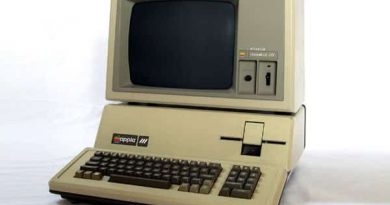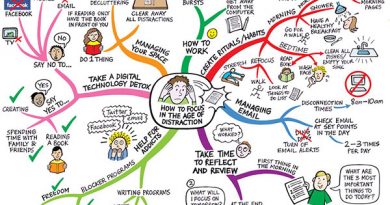How to Use Lego Serious Play in the Design Thinking Process?
The design thinking process is essential for companies who would like to lead the market through creativity and innovation, and proper tools need to be used to achieve this goal. This is where I got introduced to Lego Serious Play (LSP). While many tools can be used in the design thinking process, such as storytelling, card sorting, SCAMPER and others, LSP workshops can provide an easy and abstract tool to focus on the problem and solution space during the different design thinking stages.
The examples in this article illustrate the application of Lego Serious Play in the design thinking process in several workshops conducted in a number of universities in the UK, including students and practitioners from design, engineering, and business. While these examples are presented from different workshops, they follow the Double Diamond design thinking process in four stages: Discover, Define, Develop and Deliver. Lego Serious Play can be applied to wider range of processes such as the Stage Gate process and lean UX.
What is Lego Serious Play?
LEGO Serious Play is a facilitated workshop methodology that uses LEGO bricks as a communication, problem-solving, and creative thinking tool to encourage active participation and collaboration among participants to explore complex issues and find innovative solutions. The LEGO Group developed it with a team of organisational development experts. It is based on the belief that everyone can contribute valuable insights and ideas, regardless of their position or background. Participants can engage in a hands-on, visual, and metaphorical thinking process using LEGO bricks as a medium of expression. The tool is one of the trademarks of the Lego Group.
“You can discover more about a person in an hour of play than in a year of conversation.” Plato
In a LEGO Serious Play workshop, participants are given specific challenges or questions about a particular topic or problem. They build 3D models using LEGO bricks to represent their thoughts, ideas, and perspectives. These models serve as a basis for storytelling and discussion within the group. The application of Lego Serious Play was adapted and customised to be applied in the four different stages.
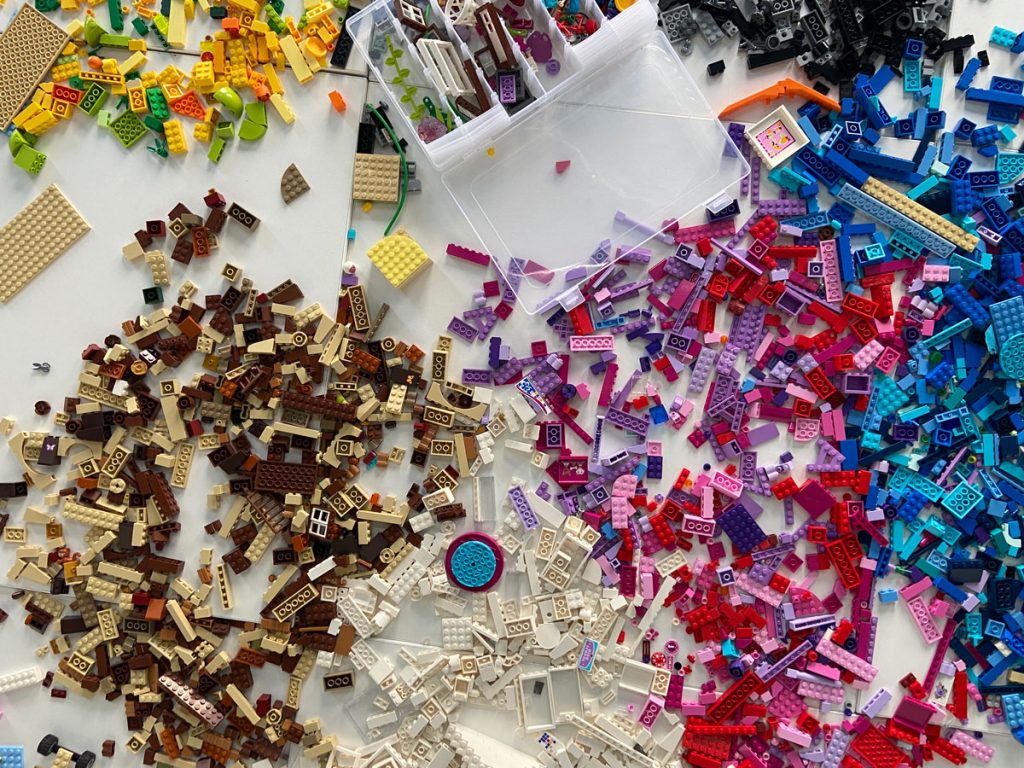
The methodology emphasises equal participation, as all participants are encouraged to share their models and narratives. It helps foster a collaborative environment where everyone’s ideas are valued and diverse viewpoints are considered. The physical nature of LEGO bricks allows for non-linear critical thinking. It enables participants to express complex concepts and emotions in a tangible way, which aligns with the principles of the design thinking process. The Lego Serious Play is used during team meetings to communicate visually through a storytelling model. The meeting facilitator goes through a series of questions that aim to provide a better understanding of the problem. Based on the provided questions, the team members build their own Lego characters and elements. These models serve the discussion to establish the flow of knowledge and thinking, to solve problems and take strategic decisions.
Lego bricks extend their role as a play toy to contribute to design thinking and strategic thinking inside large organisations through the Lego Serious Play tool. The target of the process is to build a solid understanding of the problem to reach creative solutions. However, design thinking is a complex process combining logical thinking and creative imagination to create innovative products and services.
The Lego method encourages participants to learn and listen to group members. Each participant has a voice and shares ideas equally with the whole group. The process requires a trained facilitator. The video below shows how Lego Serious Play establishes how to build a creative learning environment:
Why do we Use Lego Serious Play?
Lego bricks have been part of many people’s childhood, and many adults still enjoy playing with them, which promotes them to become one of the thinking tools. Playing with Lego helps players to innovate and express their ideas visually using colourful bricks. In the design thinking process in education or companies, Lego Serious Play qualifies to become one of the thinking tools due to the following reasons:
They are building a quick prototype of ideas. Each team member creates the core model using the basic bricks and starts adding, enhancing, or modifying it as creative thinking flows. This visual presentation and storytelling narration contributes a complementary understanding of the idea and modifies it during storytelling. Visualising the ideas into a model eliminates the fear of failure as it is treated with a prototype that can be changed during design thinking.
Visualising ideas in the 4D space. While the Lego bricks gather to build 3D models, moving them and modifying them adds a fourth dimension: time. As the models change during the storytelling, the business scenario and innovative strategies are adjusted accordingly.
An open platform is used for everyone’s contribution. This model allows everyone to share ideas and contribute to making decisions. This collaborative scenario helps build with others’ ideas and contributes to a better understanding of the challenges.
The purpose of Lego Serious Play can be applied in the different stages of the design process based on the above characteristics of Lego Serious Play to investigate the situation, design problems, and explore concepts of solutions.
Who is involved in the process?
Each Lego Serious Play group should include 4-8 participants to ensure the focus and getting the most out of the discussion. Each group should be assigned a facilitator responsible for creating challenges, managing group dialogue, asking questions, as well as, help the participant to share ideas (check How to Use the Action Priority Matrix in Time Management?).
Each group depends on each model, which reflects the answer to the challenge. During the discussion, there is no wrong or only right answer. The models are simply tools for the discussion. While the look of the model is significant, the meaning reflected by each model is the most important.
Applying Lego Serious Play in Design Thinking Process
Before starting the process steps, a warm-up stage should be applied to help participants to use the bricks to unleash their creativity (check Inspired Lessons from Da Vinci’s Creative Thinking Methods) and establish their engagement with the tool. While putting the brick in front of the team, the facilitator can push them to play with it. The facilitator asks the team to build simple shapes, such as a duck, in five minutes using a limited number of bricks, five maximum. Then, the team can create a move to a more complex example, such as a tower using ten bricks in ten minutes.
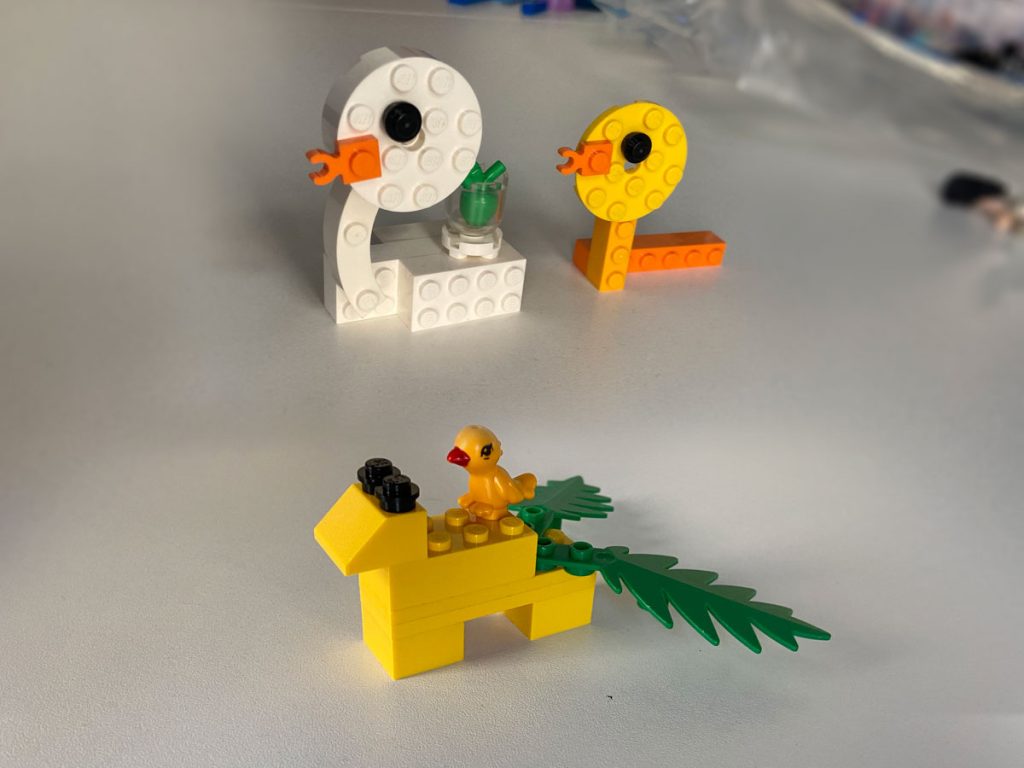
Once the team get introduced to the bricks and can use them freely. We move to the different phases of the design thinking process.
Discovering the Problem
The starting point is to define the challenge that needs to be investigated and formed as a question. It introduces the challenge and asks questions related to the problem that must be solved to start the discussion. For example, the challenge can be finding a solution for ocean microplastics. In this stage, the team start using different research methods to collect data about the challenge and visualise the findings using Lego bricks. In this workshop, the engineering students tried to explore the ocean microplastics problem and collected secondary data about the problem due to the time limitation of the workshop.
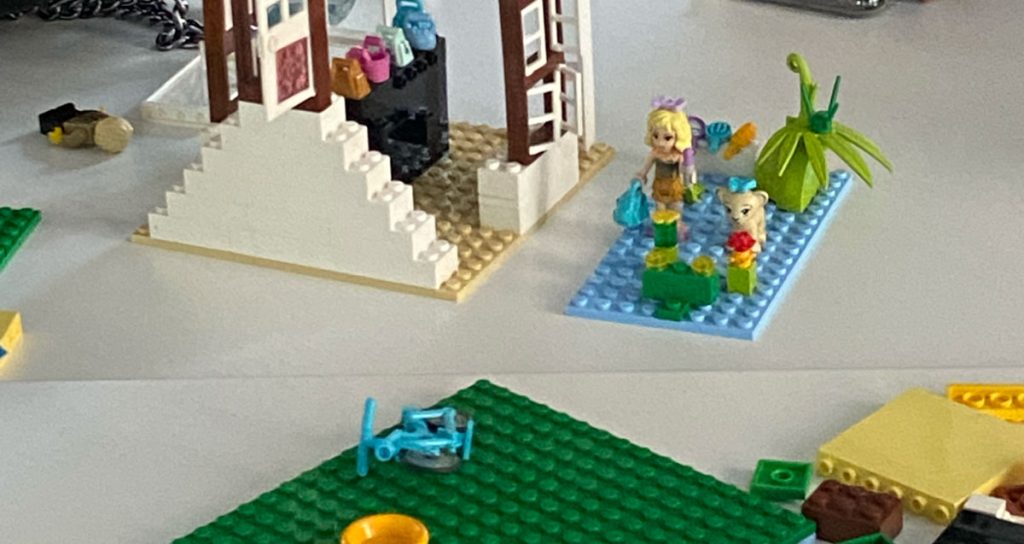
This representation of the challenge elements and related information, such as persona, is known as the metaphor, the models that reflect the challenge described in the first step with the ability to describe each part of the model.
Problem Definition
Once the team visualised their findings, they discussed them together and worked to build a clear definition of the problem that needed to be addressed. The problem definition is as important as the solution itself. Without clarity of the root problem, solutions may end up being inaccurate. In this example, the students end the discussion by defining their problem as the widespread microplastics in the ocean and how hard it is to collect them. This definition helps the team to focus on developing the proposed solution prototypes in the next stages.
Developing Prototypes
Then, the team uses Lego to visualise their prototypes that visualise the solutions (Design Thinking Tools and Methods Complete Guide). The ideas may start simple and clumsy as they put the bricks together. Then, the nature of the Lego bricks influences their practice as they keep improving their prototype. As they develop the prototype, issues appear as they visualise their models. The discussion between them helps to put the team’s ideas into practice and focus on solving the model problems to make it realistic, practical and effective. In the ocean plastic workshop, the team built a boat system that can allow any boat to filter the micro plastics in the ocean as they navigate through it ( se the figure below).
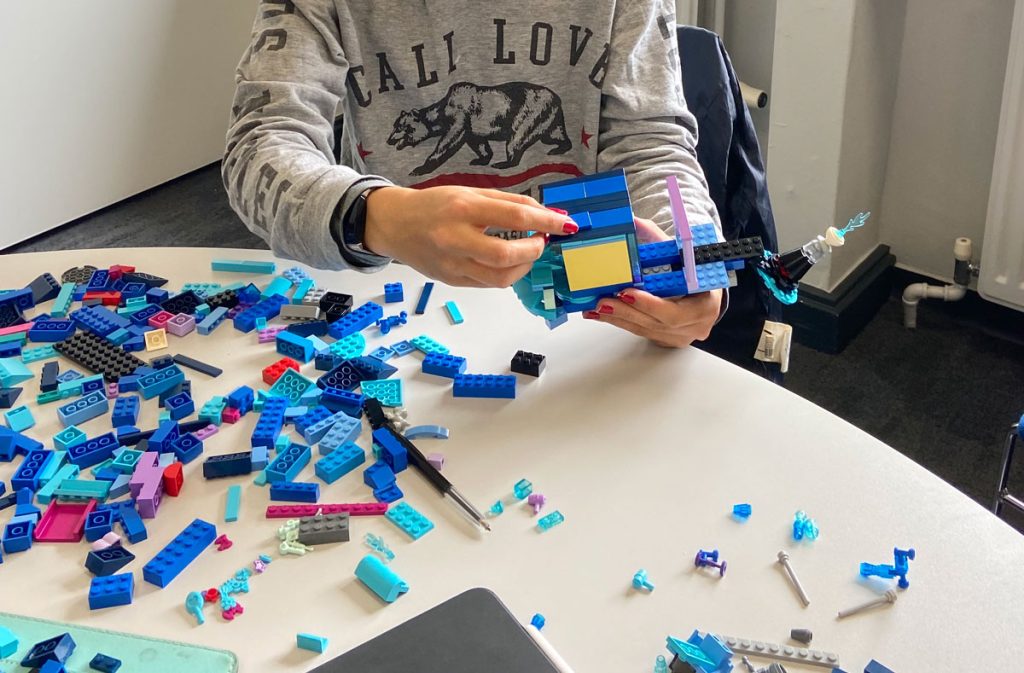
As shown in the figure above, the model was built as modules that can be added together. As they built their model, improving the modules helped them achieve better prototype versions. Sharing thoughts and evaluating the models are essential to identify opportunities for solutions to the main challenge. The students discussed the different modules that can be attached to boats to filter microplastics, such as adding solar units to power the boat or adding trail units for shallow beaches.
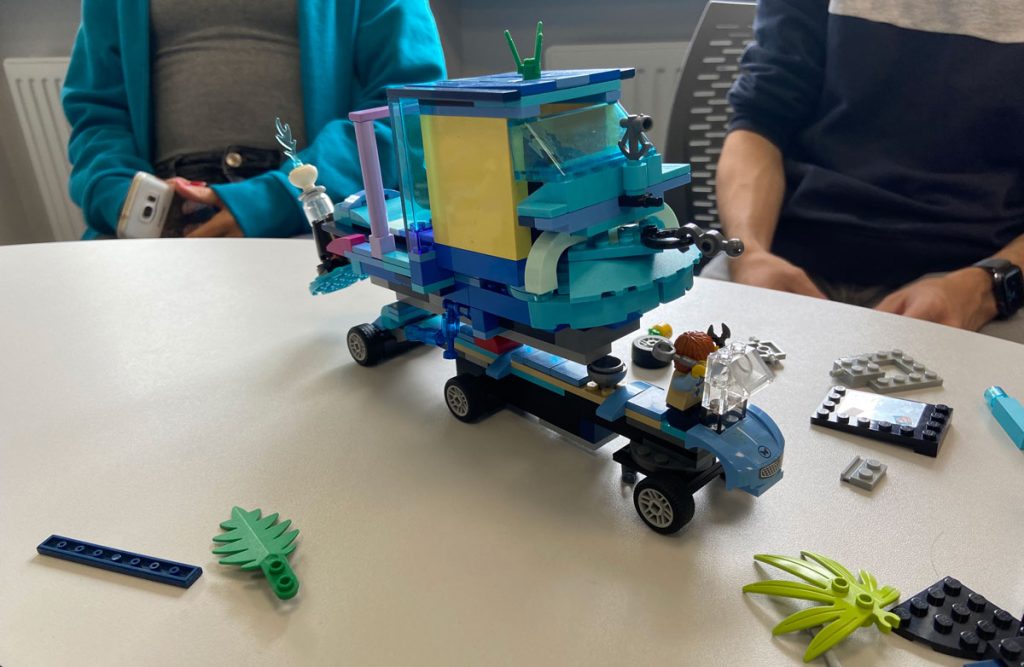
In the below video, one of the students show how their proposed model can be attached to a trail system to allow boats to be carried through shallow sand beaches.
Delivering Prototypes
Based on the discussion between the team members, they presented their developed solution. In real-life situations, the model can be tested with the stakeholders involved in the problem to evaluate the proposed solution and take it to further prototyping to test it before implementation.
The implementation of the Lego Serious Play in the design thinking process can help team members to build empathy and explore the problem by focusing on the problem itself rather than the details of the prototype, thanks to the nature of Lego bricks that create quick solutions metaphors to discuss it between team members.
Conclusion
Many tools help companies and organisations achieve the goal behind the design thinking process. One of these methods is Lego Serious Play. In this method, the design thinking group uses the Lego bricks to build models that reflect challenges and find solutions for problems. It is crucial to understand the benefits and limitations of Lego Serious Play to implement it properly.
Note: This article was originally published on 23rd January 2015.
Summary
LEGO Serious Play is a facilitated workshop methodology that uses LEGO bricks as a tool for communication, problem-solving, and creative thinking. It is a process designed to encourage active participation and collaboration among participants to explore complex issues and find innovative solutions.
The participants are involved in a series of activities and challenges related to a specific topic or problem. They are provided with LEGO bricks and asked to build 3D models that represent their thoughts, ideas, and perspectives on the given topic. The models serve as a form of communication and expression.
Once the participants have built their models, they engage in storytelling and discussion within the group. Each participant shares their model and explains its significance, using it as a metaphor to communicate their thoughts and insights. Through this process, a rich dialogue emerges, allowing participants to explore different perspectives and gain a deeper understanding of the topic at hand.
Question: Introduce the challenge and ask questions related to the problem which needs to be solved in order to start the discussion. For example, the challenge can be building a model that reflects the strength of the product or the organisation.
Metaphor: In this step, the participants build the models that reflect the challenges described in the first step with the ability to describe each part of the model.
Sharing: In this step, each participant shares their thoughts and ideas about the challenge and how it is visually reflected in the challenge.
Questions: In this step, the facilitator asks questions, and the groups share experiences in order to build a solution for the model based on thoughts discussed during the process.
Lego Serious Play is a valuable tool in the design thinking process, with pros including tangible representation, enhanced communication and collaboration, creative thinking and ideation, emotional engagement, and iterative prototyping. However, there are also cons, such as time and facilitation requirements, limited complexity of models, cost and logistics, comfort and familiarity issues, and interpretation challenges. Despite these challenges, with proper planning and facilitation, Lego Serious Play can enhance creativity, communication, and problem-solving in design thinking workshops.





